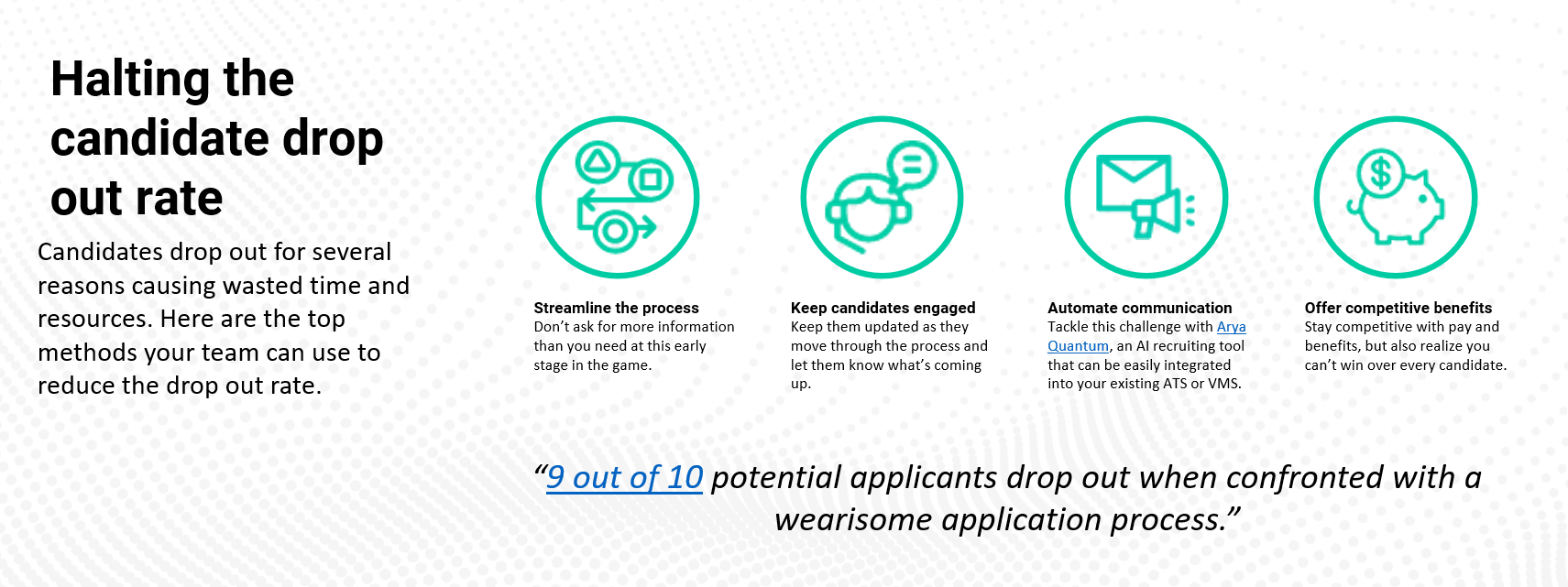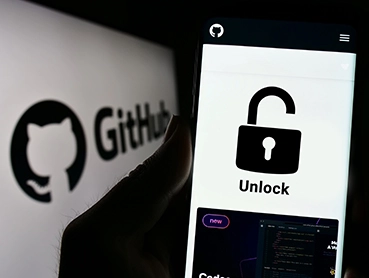8 reasons why candidates drop out of the hiring process

An executive vice president of Adams Bank & Trust, a small bank in Colorado, was looking to hire a new commercial loan officer. He met with and interviewed several candidates over the course of a month, narrowing his choice down to two promising contenders They both have relevant experience, strong résumés, and appealing personalities. To his surprise, however, one applicant stopped responding to the bank’s efforts to reach out. After over a week of silence, the candidate finally replied and said they were withdrawing their name from consideration.
“I still had a viable candidate. And in a way, they made my job easier,” said the executive vice president. “I was surprised at their decision and wanted to make sure we, as a company, hadn’t done anything to scare them away.”
This story isn’t all that uncommon. Candidates can drop out of the hiring process for many reasons. Sometimes, like in this case with Adams Bank & Trust, the candidate’s change of heart doesn’t cause a major problem. In other cases, however, the withdrawal can be costly for the employer in terms of both time and money. This is especially true if it means starting the recruitment process over again from the beginning.
Here are eight reasons why candidates might choose to drop out of the hiring process and what you can do about it.
They don’t feel the company is a good fit
When applicants accept an interview, they may take note of the workplace atmosphere and notice whether the interviewer and other employees look happy and busy. They’ll likely ask questions about your company’s policies and procedures, or things like the training culture, company values, and other elements that’ll affect their job satisfaction and lifestyle.
If a candidate doesn’t feel comfortable with what they see and hear, it could be a deal-breaker.
Solution: Keep the workspace tidy, comfortable, and appealing. Creating an inviting culture should be a priority.
A long and difficult application process
A candidate’s first interaction with your company is the job listing and application themselves. A long and complicated process can cause potential applicants to give up right away.
In fact, Dr. John Sullivan, professor of management at San Francisco State University, says nine out of 10 potential applicants drop out when confronted with a wearisome application process.
Solution: Streamline your application process. Don’t ask for more information than you need at this early stage in the game.
A negative interview experience
Who’s conducting the interviews? Are they good brand ambassadors? Do they represent what you expect from your employees?
An interviewer who comes across as demanding, impatient, unhelpful, arrogant, critical, or uninterested can be the kiss of death. Similarly, suppose the candidate arrives unprepared for the interview because nobody told them where to go, who to talk to, or what to expect. In that case, it can leave a bad taste in their mouth about your organization’s ability to lead.
Solution: Give the candidate as much information as possible about the interview. Make sure interviewers represent your company well.
Lack of communication
In a survey of 179 candidates, 75% said they had withdrawn an application at least once in a two-year period. 87.5% of those respondents blamed “communication issues” for their change of heart. In other words, the company failed to keep the candidate informed.
A candidate not knowing where they are in the hiring process or even if they’re still in the running can be very frustrating. It can also raise red flags about what working for your company might be like.
Solution: Communicate with applicants. Keep them updated as they move through the process and let them know what’s coming up. Never “ghost” anyone you’ve made contact with.
The hiring process wasn’t efficient
The time it takes to make a salary offer (or reject the candidate) could be taking too long even though you feel it’s not. In today’s world where every second matters, people don’t want to wait several weeks to hear back after an interview. Nor do they want to wait a month after a phone screen to know if you’ll be reaching out to them for an interview.
Solution: If your hiring process takes time and can’t become more efficient, disclose this fact to the candidates as soon as possible so they know there are reasons for having to wait. If you feel the process is indeed lacking efficiency, meet with your HR/recruiting team to review every aspect of your current process. Put yourself in the applicant’s shoes – how would you want the hiring process to go? Make an actionable plan to implement changes.
They received a better offer elsewhere
Most job seekers apply for more than one job at a time. You may not be the only one courting the candidate, and they may find the other shoe to be a better fit for any number of reasons, including pay, benefits, flexibility, remote options, culture, etc.
Solution: Stay competitive with pay and benefits, but also realize you can’t win over every candidate. Be gracious, wish the person luck, and let them know your door is always open should circumstances change.
Misconstruing the job description
This may sound like a “them” problem, but it’s actually an “us” problem more often than you realize. Perhaps your job description is too vague or leaves out important responsibilities. Or, conversely, it may sound too demanding or intimidating.
Candidates don’t want to feel under or overqualified for a position, and you don’t want to encourage anyone to apply that isn’t qualified. Nor do you want to scare away potential diamonds in the rough.
Solution: Make sure job descriptions are realistic, reasonable, and transparent about expectations and requirements.
Slow decision making
When an organization is slow to make a hiring decision, it can be disheartening for applicants who need to get on with their job search. Other decisions may ride on whether or not they get the job, especially if it means they’ll need to relocate.
If the candidate runs out of time to make these other big decisions, they may feel they need to drop out simply so they can move on.
Solution: Keep in mind you have other people’s futures in your hands. Try to move things along as quickly as you can, while still being thorough. Communicate frequently to help applicants feel that you’re making progress.
Frequently asked questions
Who should be involved in the hiring process?
Ideally, the people involved should have a stake in the outcome – managers, direct team members, etc. They’ll be able to best answer a candidate’s questions about the job, and they’ll also be most invested in making a good impression and finding the right fit. However, you shouldn’t have so many people involved in the process that you have too many “cooks in the kitchen” to be able to make a decision.
How many candidates should we have in our pipeline?
You want to strike the right balance between having enough applicants in the pipeline to recover should one or two candidates drop out, and not having so many that the process becomes too long. Much depends on the size of the company and the job description itself, but three to five serious candidates is a realistic number.
Should the hiring process be customized for different positions?
To a certain extent, yes. Many elements will be the same, like applications and interviews, but you can customize the application process and interview questions based on the job. Whoever is conducting the interview should have input. Not only will customization feel more personal and authentic to the applicant, but the interactions and answers you get will be highly relevant.
How does the hiring process impact the candidates’ experience?
Unless a candidate is already a follower of your company or they’re connected in some way, the hiring process is likely the very beginning of their experience with your organization. It sets the tone for the whole relationship, giving them their first impression of your culture and what working for the company would be like. Having a pleasant, streamlined hiring process is imperative to keeping people in the pipeline.
Leverage AI to retain candidates
Is your recruiting team taking full advantage of digital resources to find and retain the best candidates?
It may be difficult to find candidates who match the specific skill sets and abilities that your company requires. You can tackle this challenge with Arya Quantum, an AI recruiting tool that can be easily integrated into your existing ATS or VMS. You’ll find qualified candidates faster while simplifying the recruiting process.
This technology also allows you to communicate with potential candidates via text, email, and chatbot, all in one consolidated chat board. You can communicate the skills you’re looking to obtain from an employee and answer any questions that candidates may have.
Arya empowers you to achieve your recruitment goals, ensuring that your hiring process puts you in a position to find the right people every time.






